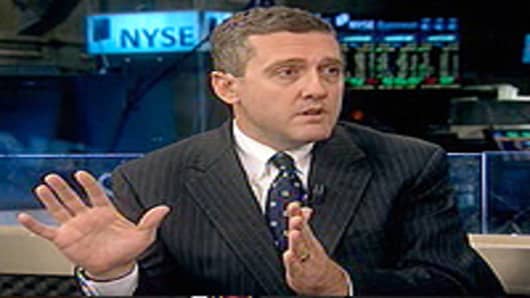"I think this upcoming FOMC meeting is going to be a tough call… the economy has slowed but it hasn't slowed so much," he said.
"I would say that I will go in the meeting with an open mind… you never want to pre-judge these things," Bullard added.
"The economy has slowed but it hasn't slowed so much that it is an obvious case to do something. It would be a very reasonable decision to say 'hey maybe we should just push it off a meeting or two and see how the data comes in;' that is a very reasonable point of view," he added.
Many analysts have predicted that the Fed will announce new quantitative easing measures — buying assets to boost the money supply — at its November meeting, to counter the threat of a weakening economy.
"We have a very easy policy but inflation has been trending down," Bullard said, adding that the Fed faces a decision between keeping the status quo or moving further with monetary easing.
"There has been a disinflation trend in 2010 but the reason that it's a close call is that it flattened out," he said. "It's very reasonable to think that maybe you don't need to do very much. It's possible."
Gross domestic product data for the third quarter, which are due to be released before the FOMC meeting, will be important for the Fed, but a decision on whether to further expand the central bank's balance sheet will not depend on a single number but on a combination of economic data, he added.
"Certainly the jobs number today will be one of the key ones, but it's not just that in and by itself," he added.
Asked whether he thought unemployment would rise past 10 percent, Bullard said:
"Well of course it's possible. I'm not really anticipating that, though. It's been unusual in economic history in the US for the unemployment rate to go back up toward its peak or past its previous peak once the economy starts to recover."
He noted that unemployment figures are usually revised and policymakers must keep that uncertainty in mind when taking decisions.
The US economy lost 95,000 jobs in September, more than expected, but unemployment remained flat at 9.6 percent.
"I think the private sector number is the key number here," Bullard said after the data was released. "We'll just have to go forward and feed that into our models."
Jobs in the private sector increased by 64,000 in September, slower than August's 93,000 increase.
Risks Attached
The dollar strengthened versus the euro after his remark that the Fed's meeting will be tough and US stock index futures fell slightly, but they pared their losses when Bullard voiced his concern about disinflation.
"If you do QE2 (the second round of quantitative easing) in a controlled, disciplined way it's a way to control this disinflation trend," he said.
"You want to balance the risks against further action but I don't think you can say 'Gee, we've done all we can'" about disinflation, Bullard added. "If the situation requires it, you have to act on it."
"Our responsibility is to get monetary policy as correct as we can get it and that's what we're trying to do," he said.
He acknowledged that the markets have attached a "high probability" on the Fed deciding on more asset-buying at its November meeting but said FOMC members need to take into account all possibilities.


